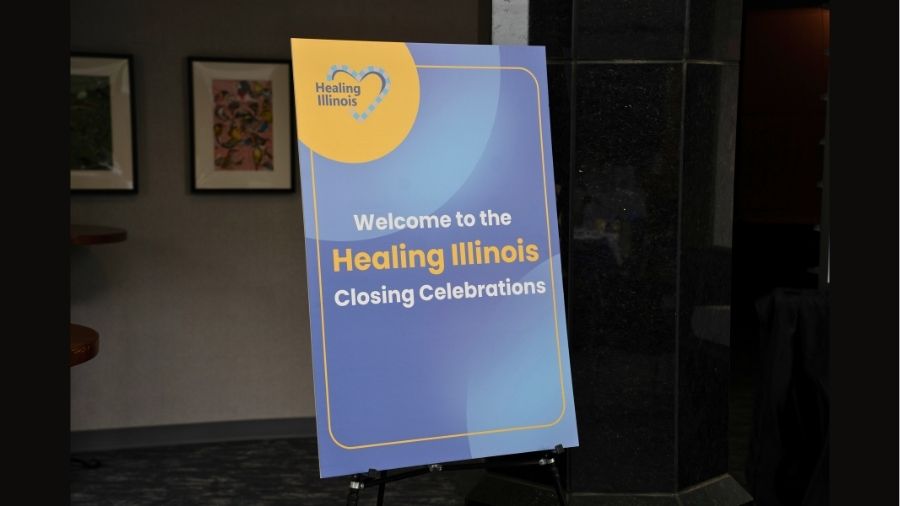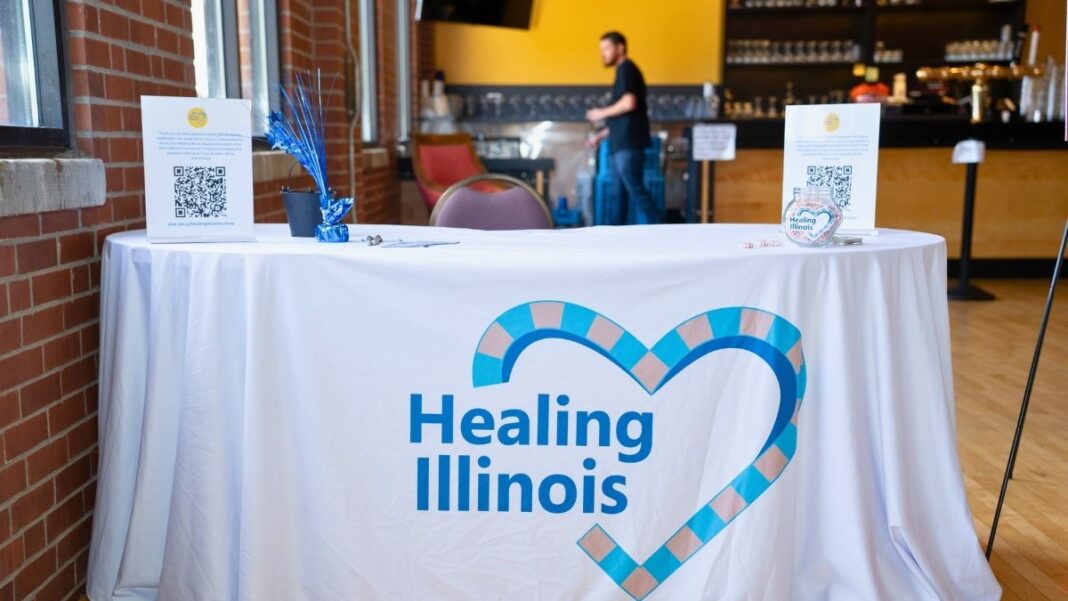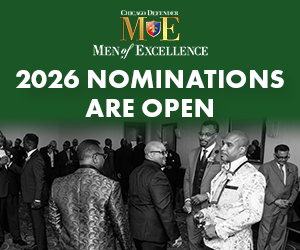Launched in 2020, Healing Illinois is a statewide racial healing initiative funding over 200 projects that build community, amplify untold stories, and promote equity (Photo Provided).
In a time of deep political division and economic uncertainty, a statewide initiative is quietly helping communities across Illinois do something radical: heal.
Launched in 2020 by the Illinois Department of Human Services (IDHS), Healing Illinois is a racial healing initiative that funds nonprofits across the state to bring people together through storytelling, community engagement and education. Managed in partnership with the Field Foundation, the effort has distributed $4.5 million annually to help communities begin—or deepen—the work of healing historic and ongoing racial harms.
At the heart of the initiative is a simple belief: everyone in Illinois has a role to play in healing. That means honoring each other’s experiences, reckoning with the state’s diverse and painful histories, and building new pathways forward.
“There’s no one pathway for people on this journey,” said Maritza Bandera, Program Manager of the Field Foundation. “Every day you wake up and try to be a better person, a better human—that’s healing.”
Three Pathways to Healing
Healing Illinois supports a range of projects through three core funding priorities:
- Community Building and Engagement: to strengthen relationships and promote collective healing within and across communities
- Media and Storytelling: to use narrative and creative work to advance racial healing
- Education and Awareness: to illuminate historical harms and highlight how we move forward
That’s led to numerous projects, from documentary series and mural-making events to healing circles and youth education programs. In 2024 alone, 202 organizations received subgrants. Demand far exceeded available funds, with applicants requesting more than $14 million in total.
To meet the need across such a broad geographic region, the Field Foundation partnered with intermediaries in every corner of the state: YWCA of Northwestern Illinois (North), United Way of Champaign County and United Way of Central Illinois (Central), and the Southern Illinois Community Foundation (South).
“We’ve been very intentional about not just focusing on urban areas,” Bandera said. “We’re connecting with the hardest-to-reach populations—those in corners of the state that are often forgotten.”
Rethinking Impact
Measuring success in healing work isn’t simple. Bandera and her team used quantitative data—how many people were reached and how many events were held—and qualitative data drawn from interviews and participant stories.
“What was different because of your project?” she asked. “Even if an organization struggled to connect, that’s still data. That tells us something.”
Every year, Bandera’s team treats the initiative as if it might be the last. State funding must be renewed annually, and shifts in federal priorities have made the future uncertain.
Still, the Field Foundation continues to refine the program based on feedback. For example, while past rounds included capacity-building tracks for groups new to racial healing, those were removed this year due to limited interest and clarity.
“Our goal,” she said, “is to support organizations in a way that, even if there’s no more funding, what they’ve built will outlive the initiative.”
Healing as Movement Work
Daniel Ash, President of the Field Foundation, sees something even bigger: a framework for statewide transformation.
“Healing work is not touchy-feely,” Ash said. “Done properly, it creates the conditions for both individual and collective transformation.”
He breaks the initiative’s impact into three levels:
- Micro: What happens at the individual or local community level
- Mezzo: How organizations connect across the state to form bonds and shared practices
- Macro: How those relationships fuel statewide movement-building, influence policy, and help communities push for structural change
This work aims to address harm, whether from racism or the impacts of COVID.
“How do we create resilience for the state? How do we prevent harm in the future?” said Ash.
“You create the type of diverse, integrated movement infrastructure that you need to make sure our state actually remains healthy but also prevents future harm.”
Ultimately, he wants to see Healing Illinois tied into the U.S. Semiquincentennial in 2026—the 250th anniversary of the Declaration of Independence. He sees that as a chance to reexamine the country’s legacy through the lens of race and migration, including the Great Migration that The Chicago Defender helped catalyze.
“I want to use the ‘Healing’ dollars to fully embrace the fact that as we celebrate the country’s 250th anniversary, it presents an opportunity to address, quite frankly, the legacy of the country and how the country has treated segments of its population over the course of those 250 years,” Ash said.
The Threat of Politics—and the Power of Possibility

Photo Provided
While Governor J.B. Pritzker’s office has expressed support for another round of Healing Illinois, the political climate is tense. Federal funds that once backed the program are drying up, and culture war attacks on racial equity have intensified.
“There are no guarantees,” Ash said. “I get dozens of emails a day from organizations losing funding. It would be reckless not to connect the dots.”
But rather than retreat, Ash argues this moment is ripe for coalition-building.
In a time where economic pain is being shared more widely than ever—across race, across class, he said, “We have the opportunity to build a coalition right that manifests enormous amounts of power to change law and policy, to better support everyday people in this country in a way that we’ve never been able to do so before.”
“I think it’s really important for folks to talk about not just the threats,” said Ash, “But the opportunities that exist at this moment.”
Healing Can Be as Simple as a Conversation
Back on the ground, healing work often looks less like legislation and more like storytelling, like sharing a meal, or finally introducing yourself to a neighbor you’ve lived next to for ten years.
Bandera mentions that healing looks like having a person read a newspaper story about someone from a different background and gaining empathy; she also adds that it could be watching a play and appreciating a different culture.
“Our goal, even with Healing Illinois, is to honor those different ways and provide those different pathways for people to enter into that [healing] journey,” she said.



